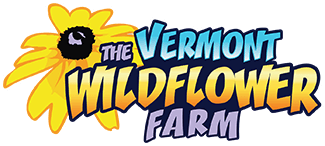Easily Create a Beautiful Butterfly Garden
Everyone loves butterflies and as they flit around your garden visiting all the flower treasures, it is enchanting to watch. Butterflies are just about as beautiful to look at as the flowers that attract them. Let's talk about creating a butterfly garden and how to do it! It is really very easy and most likely you will find flowers in your garden that already are attractive to butterflies so with a bit of extra effort you can create a truly beautiful and beneficial haven for these winged creatures and the butterflies will love you for it!
Location: Choose a spot that is not isolated from other plants. Butterflies are more comfortable in an area with other plants and flowers. It will also be easier to get from one plant or flower to another. Butterflies will spend more time in your yard if they have enticing plants to choose from rather than a sea of grass with scattered patches of flowers.
What Should My Garden Include? There are a variety of plants that attract butterflies and those you choose should be varied in color and height. Consider shrubs like Lilac, Weigela, Azaleas, Rhododendron and Butterfly Bush. While butterfly bushes are considered invasive by many folks, you can always purchase a sterile variety that does not drop seeds. When choosing wildflowers, you must have Butterfly Weed. Butterflies are attracted to its bright orange color, but it also provides food for caterpillars. No caterpillar, no butterfly! Herbs like Dill and Parsley are also a good food source. Common milkweed is one of the few plants in which the Monarch Butterfly will lay its eggs. Common perennial wildflowers to use are Hollyhocks, Black-eyed Susans, Purple Coneflower, Bee Balm, Cleome, Cosmos, Sedum and Asters. Add in a few annuals for quick bloom like Baby's Breath, Lemon Mint, Red Poppies, Dwarf Sunflower, Catchfly, Nasturtium and Zinnia. You can also try our Hummingbird/Butterfly Mix! Planning Your Garden: You should ensure that you will have bloom for your entire growing season. The bushes like lilac, rhododendrons and azaleas provide a good source of food in spring. These will be followed by the annuals for first year and perennial wildflowers for second and successive years. In the fall, asters, butterfly bushes, butterfly weed, and sedum will keep them fed right up until they migrate.
What Else Should I Have in My Butterfly Garden: Along with flowers for food and other sources, your garden should also include a place for butterflies to rest and give shelter from wind, rain and cold. To create a shelter, try a small pile of logs, if not you can purchase a butterfly house which comes with slots that the butterflies enter and perches for them to rest. It keeps predators out as well. Just check your butterfly houses periodically to ensure wasps and others don't start nesting or your butterflies won't enter. Try some flat rocks in the garden, butterflies love to sun themselves. If you can find flat rocks with a shallow indentation, this will also allow water to collect and give your butterfly colony a place to drink. If not, purchase a butterfly feeder. They work really well. The best thing you should add to your butterfly garden is an iron chair or some type of bench where you can sit and enjoy the beautiful butterflies. After all, this is why you have created the garden so that both you and the butterflies can enjoy it!
Host Plants for Different Kinds of Butterflies:
Yarrow - Painted Lady Butterflies
Hollyhock - Painted Lady Butterflies
Malva - Painted Lady Butterflies
Borage - Painted Lady Butterflies
Goat's Beard - Dusky Azure, Celastrina Nigra Butterfly
Milkweeds - Monarch Butterfly and Swallowtails also feed from them.
New England Aster - Pearl Crescent Butterfly
Wild Blue Indigo - Wild Indigo Duskywing, Eastern Tailed-Blue, Orange Sulphur, Clouded Sulphur, Frosted Elfin and Hoary Edge Butterflies
Partridge Pea - Orange/Common Sulfur, Cloudless Sulfur, Clouded Sulphur Colias philodice , Gray Hairstreak and Little Sulfur Butterflies
Purple Prairie Clover - Dogface sulfur, Striped Blue, Mexican Blue
Perennial Lupine - Melissa Blue and Karner Blue Butterflies
Penstemon - Arachne Checkerspot Poladryas arachne Butterfly
Black-eyed Susan - Silvery Checkerspot Chlosyne nycteis Butterfly
Sunflowers - Silvery Checkerspot Chlosyne nycteis Butterfly
Violets - Zerene Fritillary Speyeria zerene, Silver-bordered Fritillary Boloria selene, Meadow Fritillary Boloria Bellona and Arctic Fritillary Boloria chariclea
Golden Alexanders - Swallowtails Many butterflies use many wildflowers as a feeding source as well.
Good mixes to attract butterflies are the Hummingbird Butterfly Mix, Native Perennial Pollinator Mix, Favorite Meadow Mix, and Deluxe Mix.

